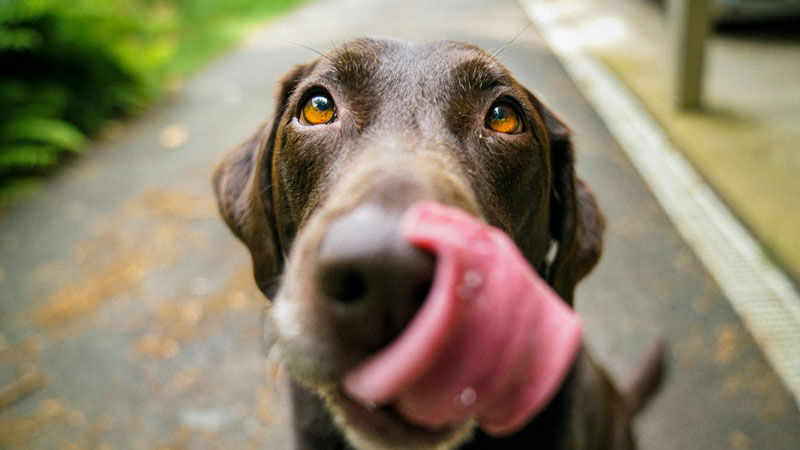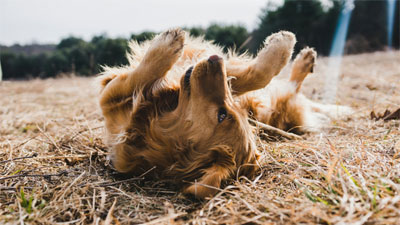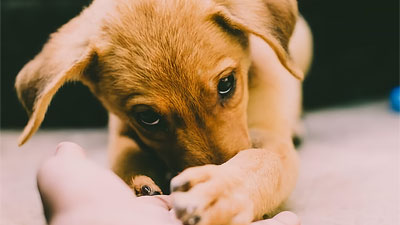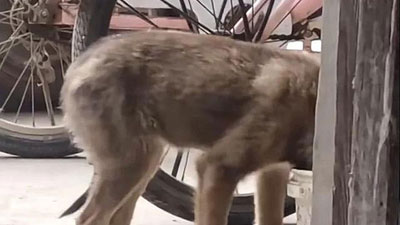- Size
- Smallest
- Small
- Small to Medium
- Medium
- Large
- Giant
- Characteristics
- Smartest
- Hypoallergenic
- Fluffy
- Best Guard
- Best Family
- Best for Kids
- Low Shedding
- Healthiest
- Police Dogs
- Most Calm
- Quietest
- Color
- White
- Black
- Grey
- Brown
- Blue
- Red
- Coat
- Hairless
- Short
- Long
- Origin
- Japan
- China
- Australia
- Germany
- Italy
- United States
- France
- Group
- Hound
- Terrier
- Herding
- Toy
- Working
- Sporting
8 Reasons Behind Your Dog's Wide-Eyed Stare

Photo by James Barker on Unsplash
Dogs, with their expressive eyes and subtle body language, communicate with us in ways that often go beyond words. One intriguing behavior that captures the attention of dog owners is when their furry companions look at them with wide eyes. This seemingly simple gesture carries a wealth of information about a dog's emotions, intentions, and the dynamics of their relationship with humans.
In this comprehensive exploration, we will delve into the various meanings behind a dog's wide-eyed stare, decoding the messages they convey and deepening our understanding of canine communication.
The Language of Canine Eyes
A dog's eyes are powerful communicators, expressing a range of emotions from joy and excitement to fear and anxiety. The size of a dog's eyes, the dilation of their pupils, and the intensity of their gaze all play crucial roles in conveying their feelings and intentions.
1. Wide Eyes as an Expression of Fear or Anxiety
One common interpretation of a dog looking at you with wide eyes is that it may indicate fear or anxiety. When a dog feels threatened or uneasy, their eyes may widen as a physiological response to stress. The whites of the eyes, known as "whale eye" or "half-moon eye," may become visible, especially in tense situations. This can signal that the dog is feeling uncomfortable and may be assessing the environment for potential threats.
2. Submissive Signals
In some cases, a dog's wide-eyed stare may be a submissive gesture. When a dog feels intimidated or is trying to convey submissiveness, they may use a combination of body language, including avoiding direct eye contact, lowering their body, and widening their eyes. This behavior is an attempt to signal that they pose no threat and are seeking to avoid confrontation.
Related: Submissive and Frightened Dogs: What's the Difference?
3. Excitement and Anticipation
On a more positive note, a dog's wide-eyed stare can also be associated with excitement and anticipation. When a dog is eagerly awaiting something enjoyable, such as a walk, playtime, or a treat, their eyes may widen in anticipation. This expression reflects the dog's heightened arousal and positive expectations.
4. Curiosity and Engagement
Wide eyes can also signify a dog's curiosity and engagement with their surroundings. When a dog is intensely focused on something they find interesting or intriguing, their eyes may widen as they absorb visual information. This behavior is often accompanied by a still and attentive posture, indicating a high level of interest.
5. Communication in the Human-Canine Bond
Understanding a dog's wide-eyed stare is especially significant in the context of the human-canine bond. Dogs are astute observers of human behavior, and they often use eye contact to communicate with their human companions. A wide-eyed look directed at a person may convey a desire for attention, affection, or a response to a specific cue.
6. Reading Other Facial Expressions
While wide eyes are a notable facial expression, it's crucial to consider other elements of a dog's face and body language to accurately interpret their emotions. The position of the ears, the set of the tail, and overall body posture contribute to a comprehensive understanding of a dog's state of mind.
7. Respecting Individual Differences
It's essential to recognize that individual dogs may have different communication styles and personalities. What might be a wide-eyed look of excitement in one dog could signify anxiety in another. Observing your dog's behavior in various contexts and understanding their unique communication style is key to interpreting their wide-eyed expressions accurately.
8. Addressing Fear and Anxiety
If your dog consistently displays wide-eyed looks in situations that evoke fear or anxiety, it's important to address the underlying causes. Creating a safe and positive environment, gradually exposing your dog to triggering stimuli, and seeking professional guidance from a certified dog trainer or behaviorist can help alleviate anxiety.
Conclusion
When interpreting a dog's wide-eyed look, it's crucial to consider the overall context, including their body language and behavior. Wide eyes in dogs can have various meanings, from fear and anxiety to excitement or seeking attention. Understanding your dog's individual temperament, preferences, and comfort level with eye contact is essential for effective communication and a healthy bond.
If you're unsure about the reasons behind your dog's wide-eyed stare or if the behavior is accompanied by other concerning signs, it's always a good idea to consult with a professional dog trainer or behaviorist for guidance.
You May Also Like
 Dog BehaviorWhy Does My Dog Roll Over and Show Her Belly?
Dog BehaviorWhy Does My Dog Roll Over and Show Her Belly? Dog Behavior5 Reasons Behind Excessive Dog Paw Licking
Dog Behavior5 Reasons Behind Excessive Dog Paw Licking Help & Advice6 Tips to Prevent Your Dog's Excessively Paw Licking
Help & Advice6 Tips to Prevent Your Dog's Excessively Paw Licking Help & AdviceWhat Does It Mean When a Dog is Cowering?
Help & AdviceWhat Does It Mean When a Dog is Cowering? Help & AdviceSubmissive and Frightened Dogs: What's the Difference?
Help & AdviceSubmissive and Frightened Dogs: What's the Difference? Help & Advice5 Reasons Why Is Your Dog Tucking His Tail?
Help & Advice5 Reasons Why Is Your Dog Tucking His Tail?